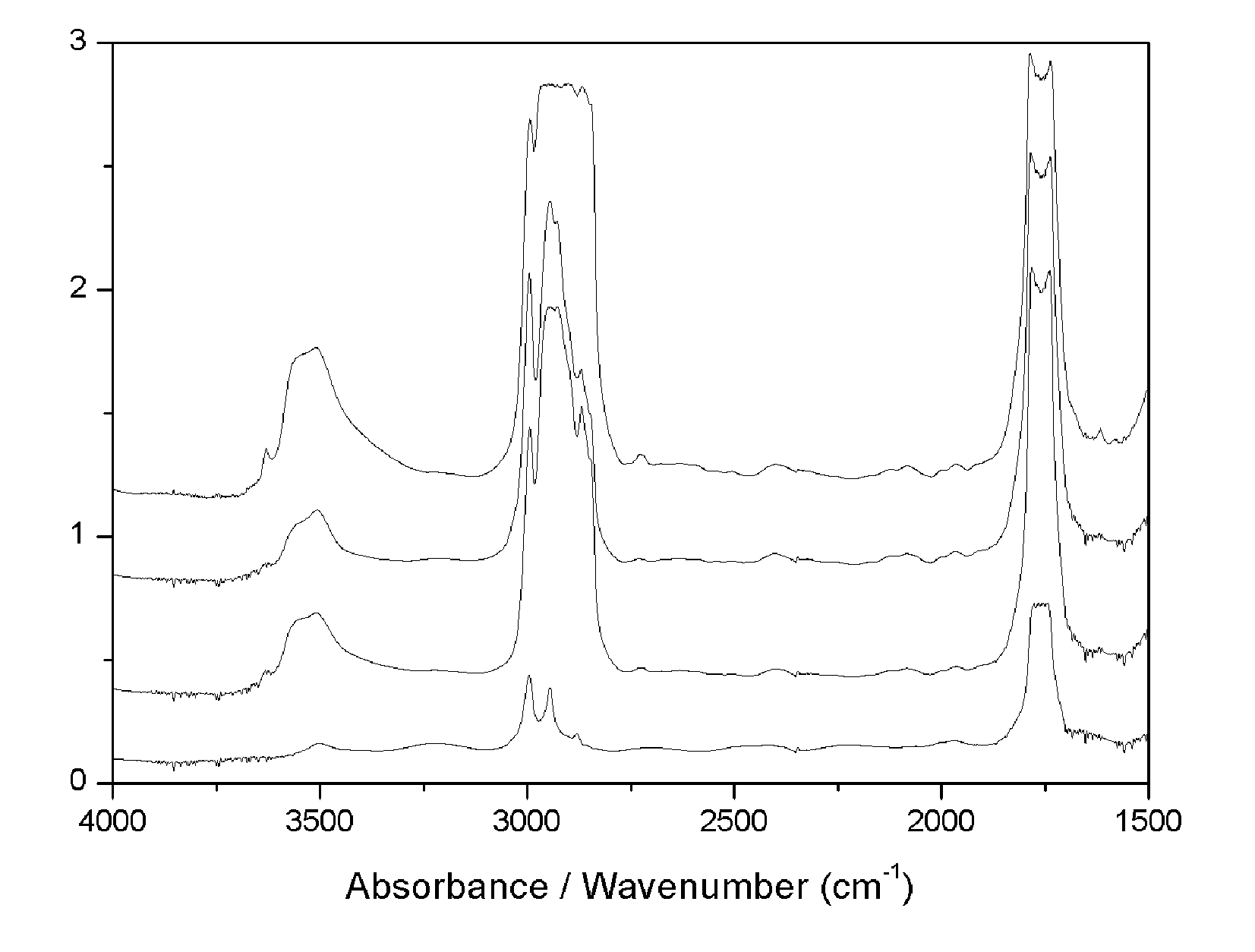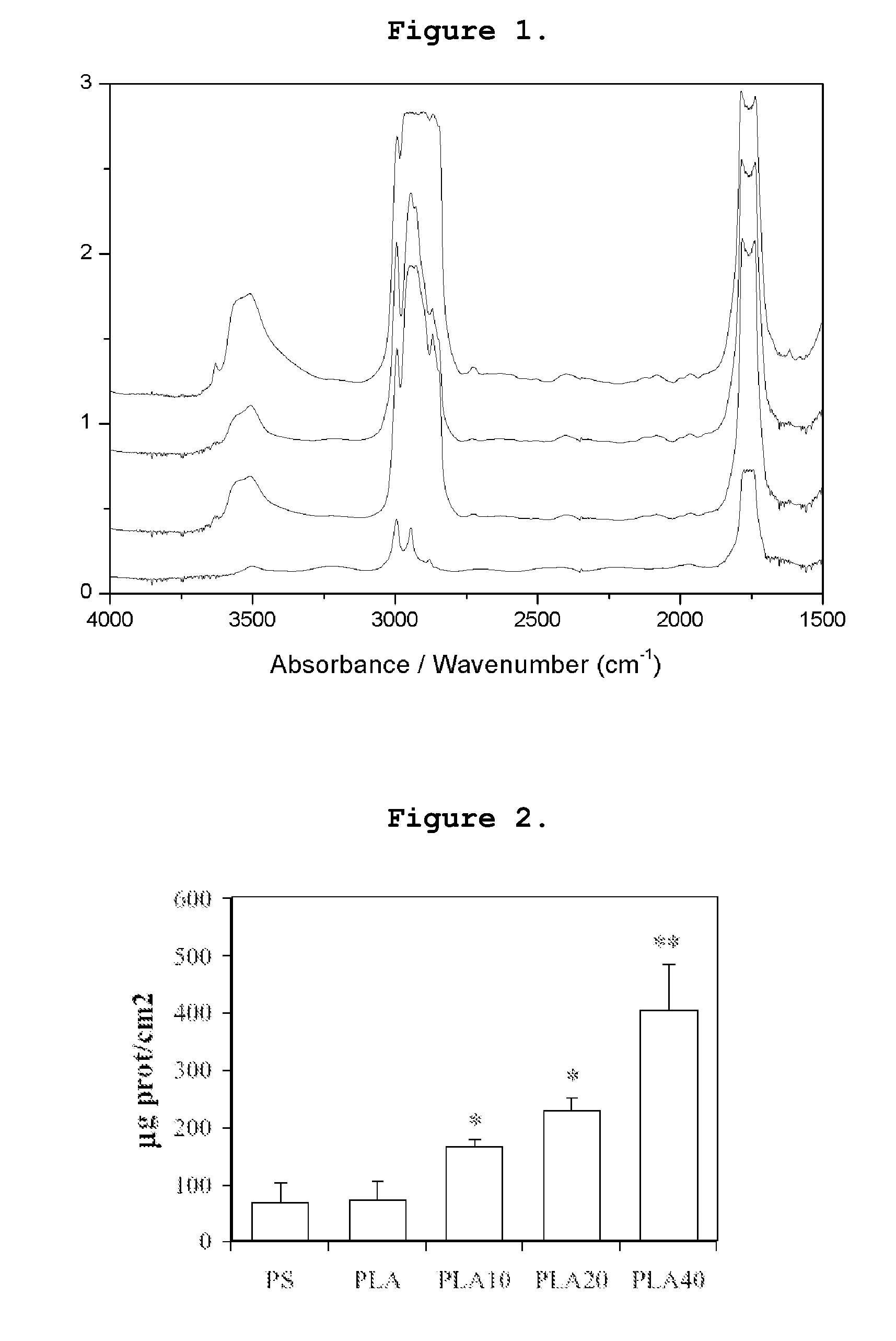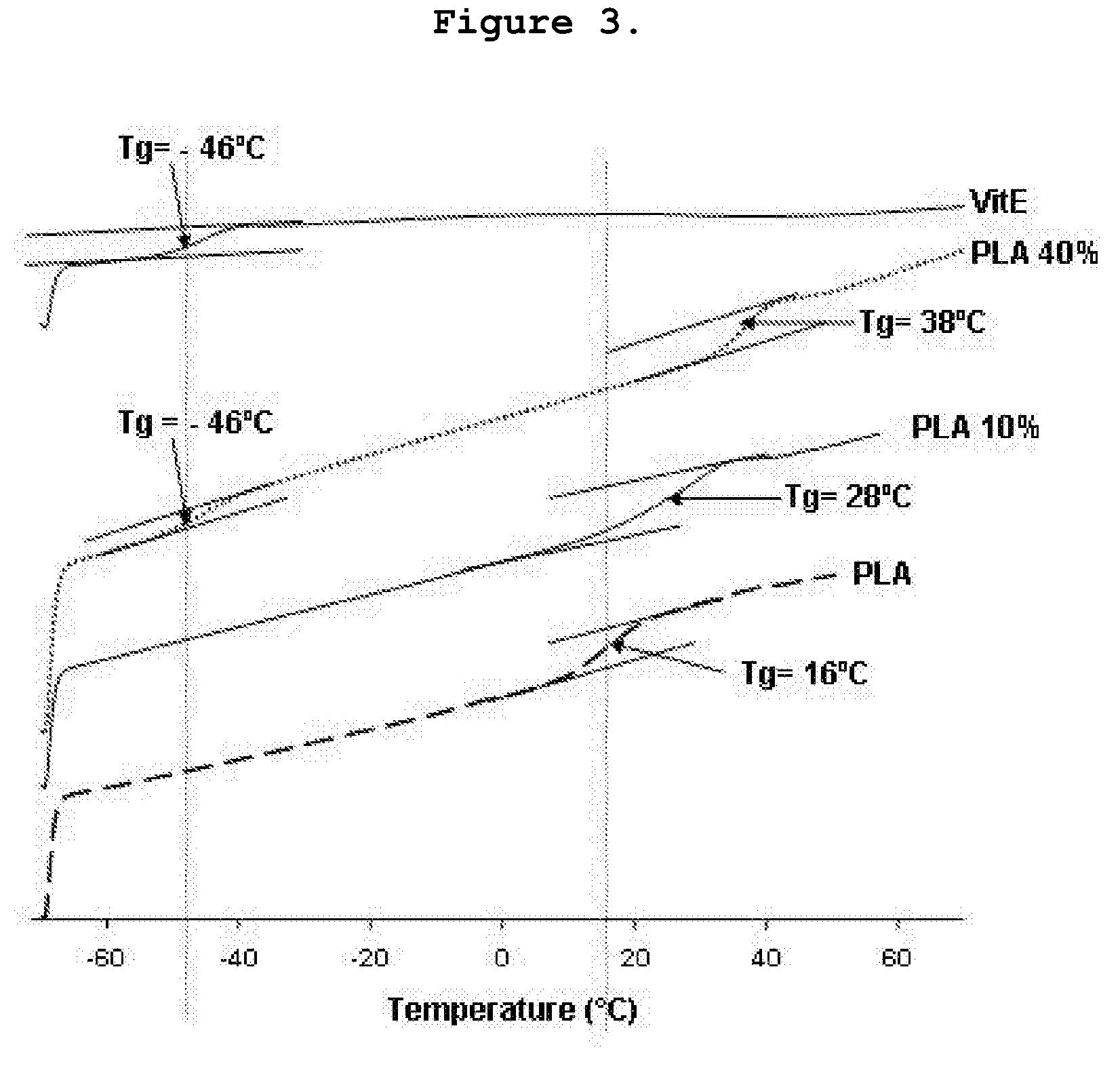Highly haemocompatible and biodegradable polymer and uses thereof
a biodegradable, high-haemocompatibility technology, applied in the field of new highly haemocompatibility and biodegradable polymers, to achieve the effect of reducing the adhesion of platelets, good candidate, and high degree of haemocompatibility
- Summary
- Abstract
- Description
- Claims
- Application Information
AI Technical Summary
Benefits of technology
Problems solved by technology
Method used
Image
Examples
example 1
Preparation and Physical Characterization of Polylactil-E.
Polylactil-E Preparation
[0024]P(D,L)LA (100% D,L, averagi mol wt 75,000-120,000) and Vitamin E (α-tocopthcrol) were purchased from Sigma-Aldrich (Milwaukee, Wis. USA). P(D,L)LA was dissolved under gentle shacking in chloroform (99.8% pure, Sigma Aldrich) at a concentration of 0.05 g / ml (5% solution w / v). Vitamin E ((±)α-tocopherol, synthetic 95% pure HPLC) was dissolved 1:1 (v / v) in ethanol (absolute extrapure, Merck, Darmstadt, Germany) differente da lavoro su Biomaterials) and the added to the P(D,L)LA / chlorophorm in order to obtain a solution with 10-40% Vit.E (w / w) (highest Vit.E concentraion added=20 mg / ml final solution). After 10 min shaking the solution was sprayed onto glass dishes at a pressure of 2 atm and the solvent was evaporated at room temperature under vacuum for 3 hours in the dark. The operation was repeated to form film sheets of ˜1 mm thickness. Films were then cut under sterile conditions into square sam...
example 2
Biological Activity of Polylactil-E
a) Haemocompatibility
Granulocyte and Platelet Adhesion
[0031]Platelets and granulocytes were obtained from human peripheral venous blood (20 ml) obtained from 10 healthy donors (age range=20-36) using EDTA as anticoagulant. All the blood samples were used within 3 hours from sampling. Granulocytes were separated from whole blood using a modification of the method of Boyum [27]. Blood (10 ml) was layered onto a Ficoll-Hypaque density gradient and centrifuged for 20 minutes at 2000 rpm to separate mononuclear cells from erythrocytes and granulocytes. The mononuclear fraction was discharged and erythrocytes were then lysed using an ammonium chloride lysing solution (150 mM NH4Cl, 10 mM NaHCO3, 1 mM EDTA, pH7.4) for 20 minutes at 4° C. Pellet containing granulocytes was then centrifuged twice in sterile phosphate buffer (PBS), cells were counted in optical microscopy using trypan blue exclusion test (viability>98%) and suspended at a concentration of 1×...
PUM
| Property | Measurement | Unit |
|---|---|---|
| water contact angle | aaaaa | aaaaa |
| water contact angle | aaaaa | aaaaa |
| water contact angle | aaaaa | aaaaa |
Abstract
Description
Claims
Application Information
 Login to View More
Login to View More - R&D
- Intellectual Property
- Life Sciences
- Materials
- Tech Scout
- Unparalleled Data Quality
- Higher Quality Content
- 60% Fewer Hallucinations
Browse by: Latest US Patents, China's latest patents, Technical Efficacy Thesaurus, Application Domain, Technology Topic, Popular Technical Reports.
© 2025 PatSnap. All rights reserved.Legal|Privacy policy|Modern Slavery Act Transparency Statement|Sitemap|About US| Contact US: help@patsnap.com



